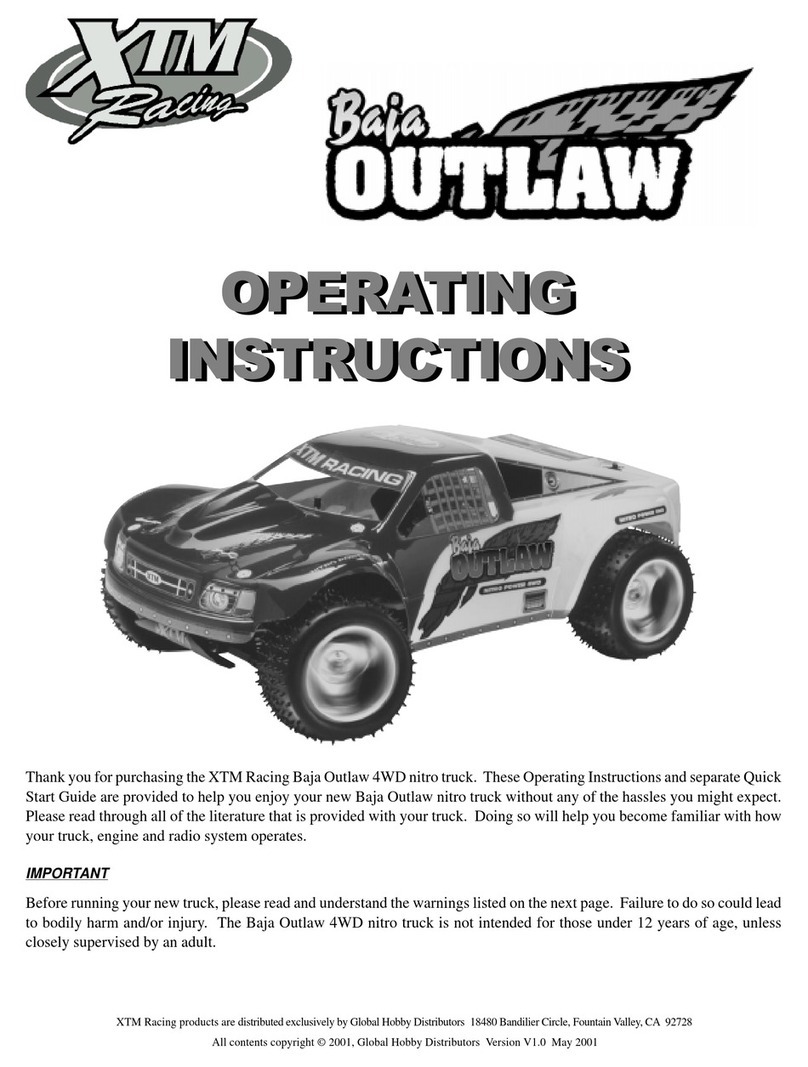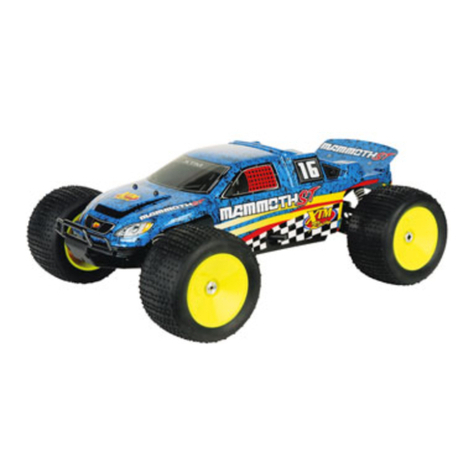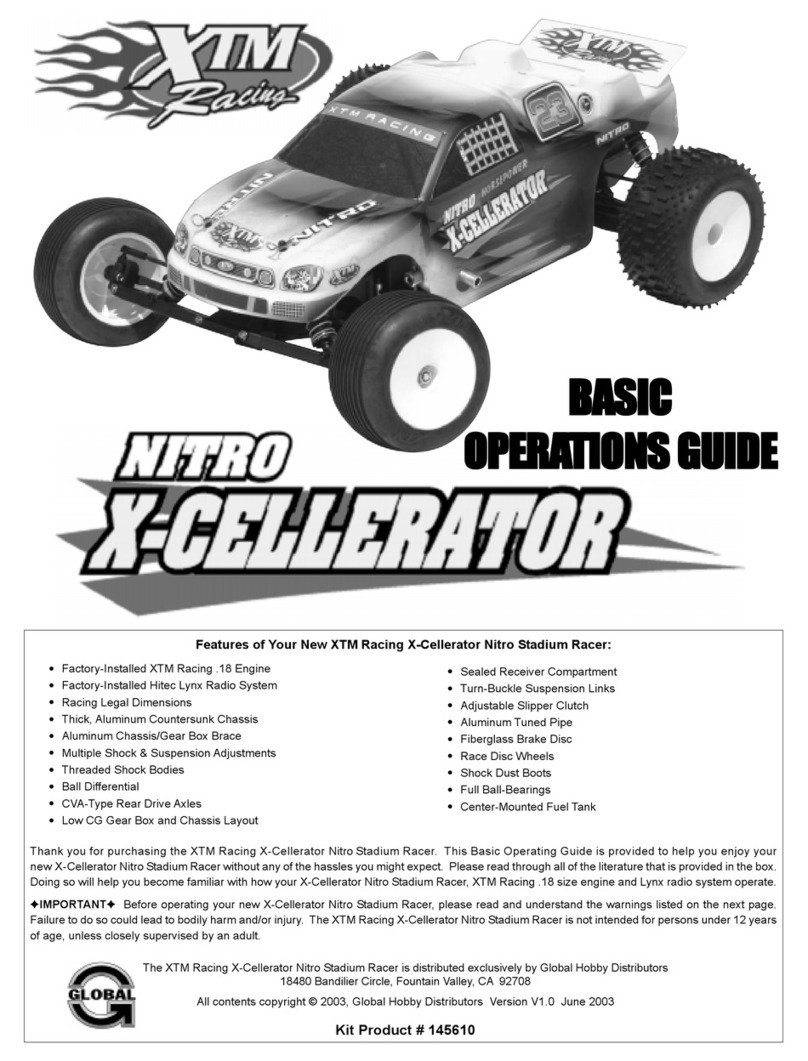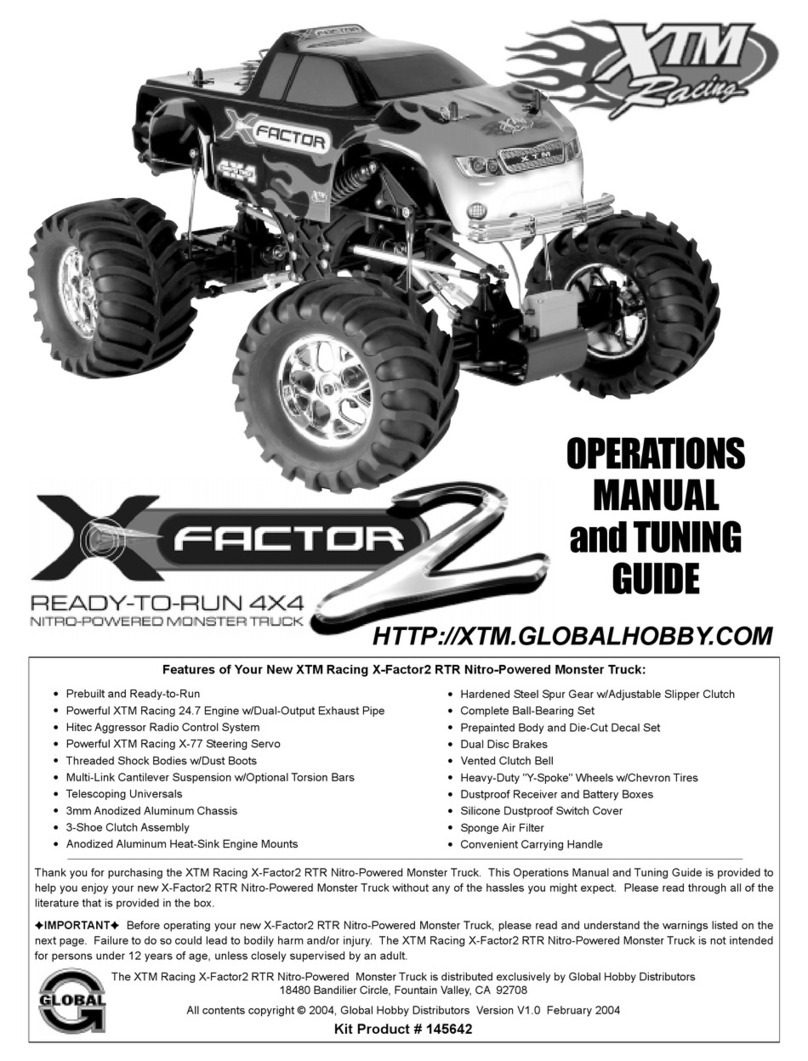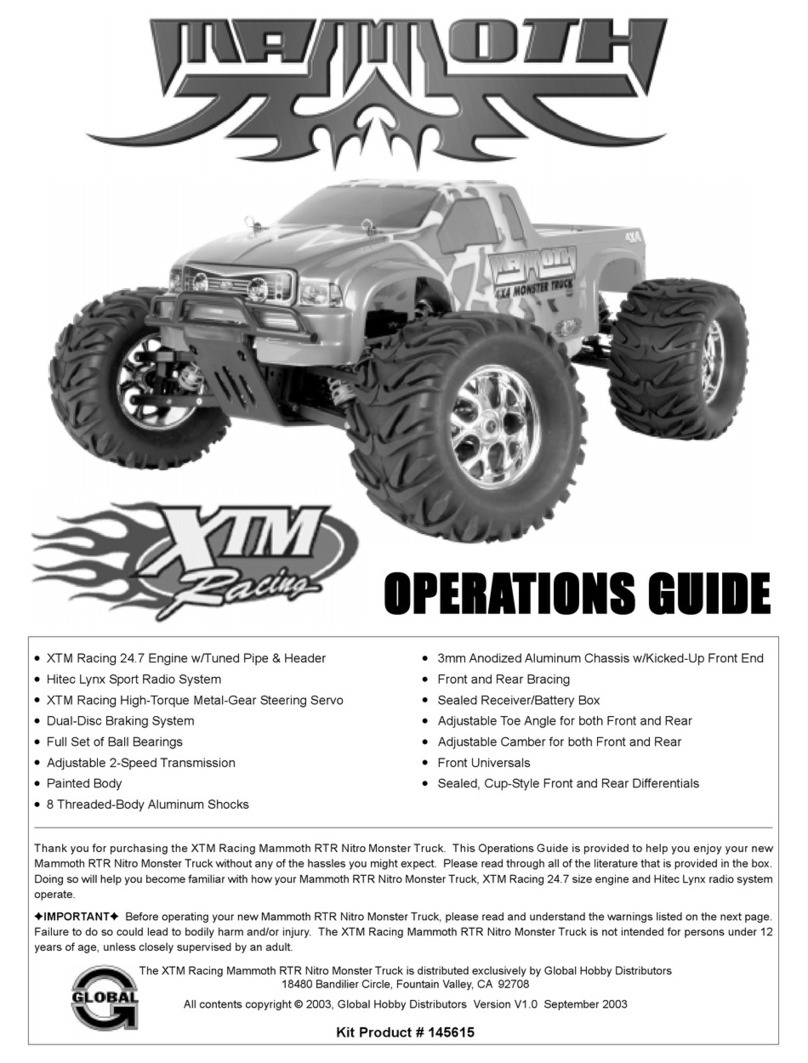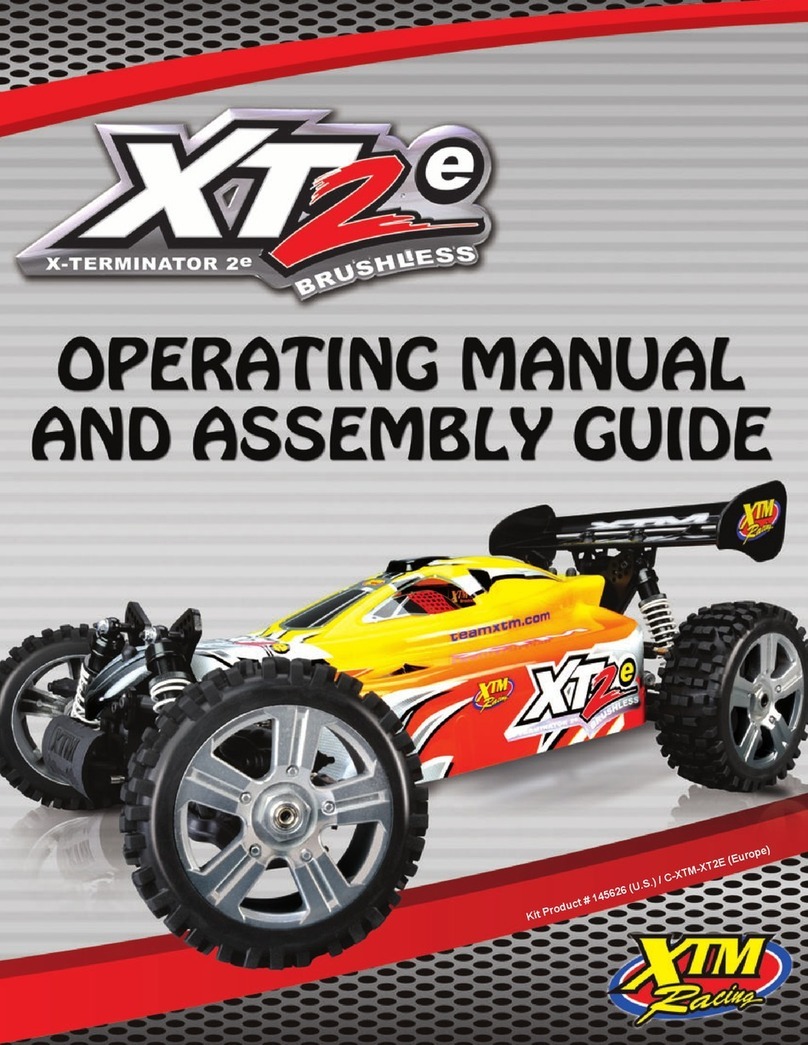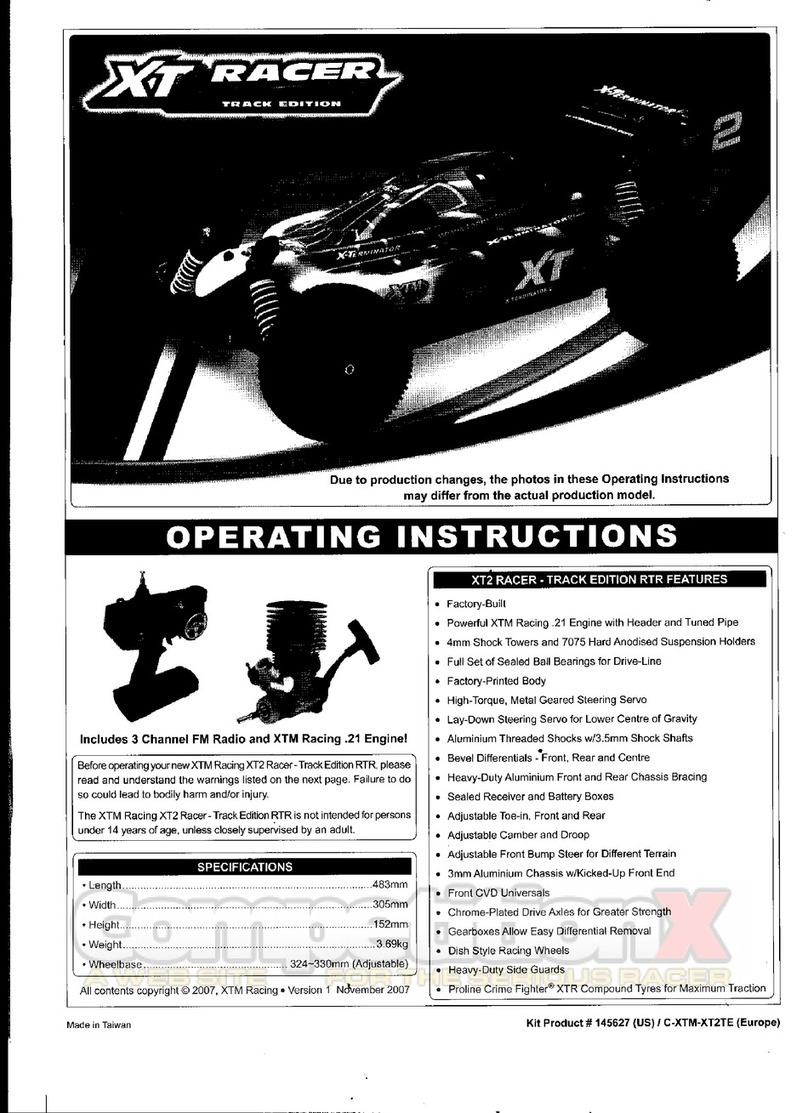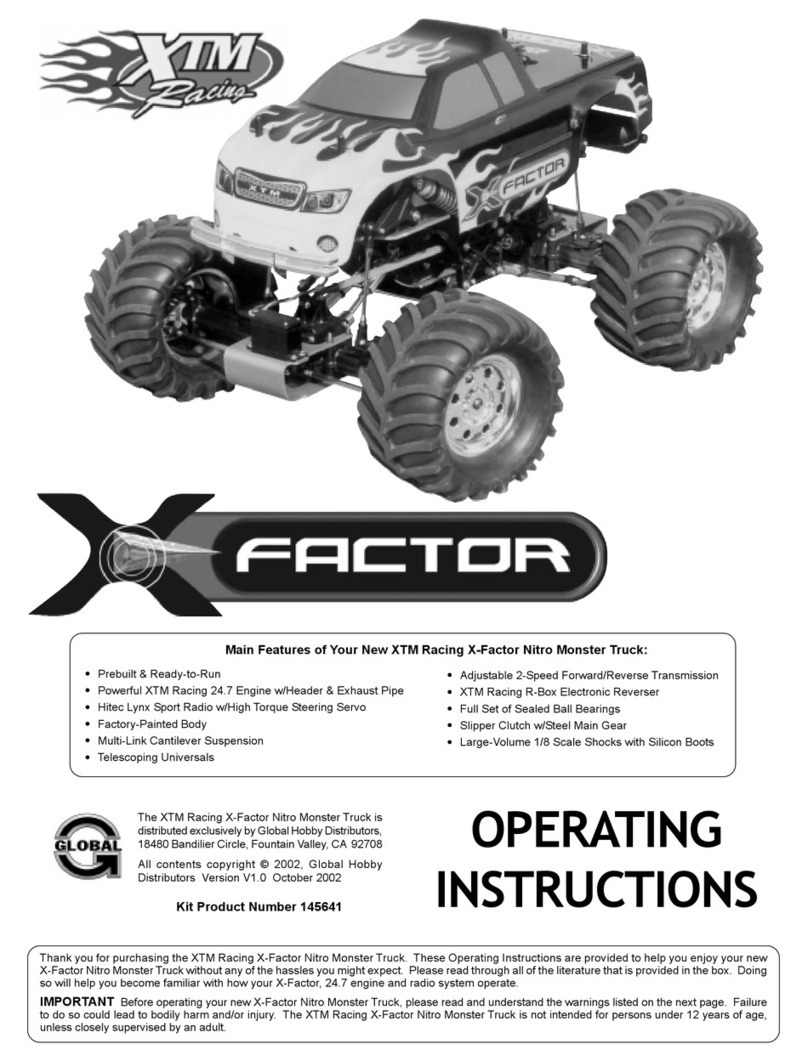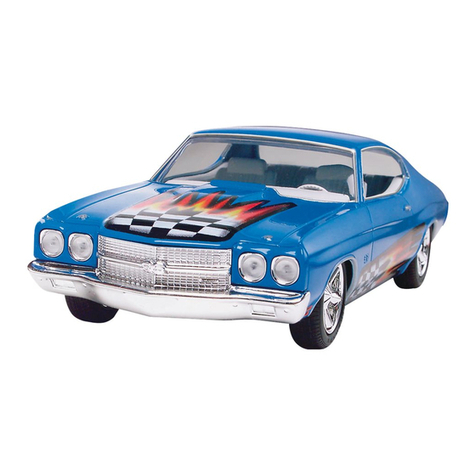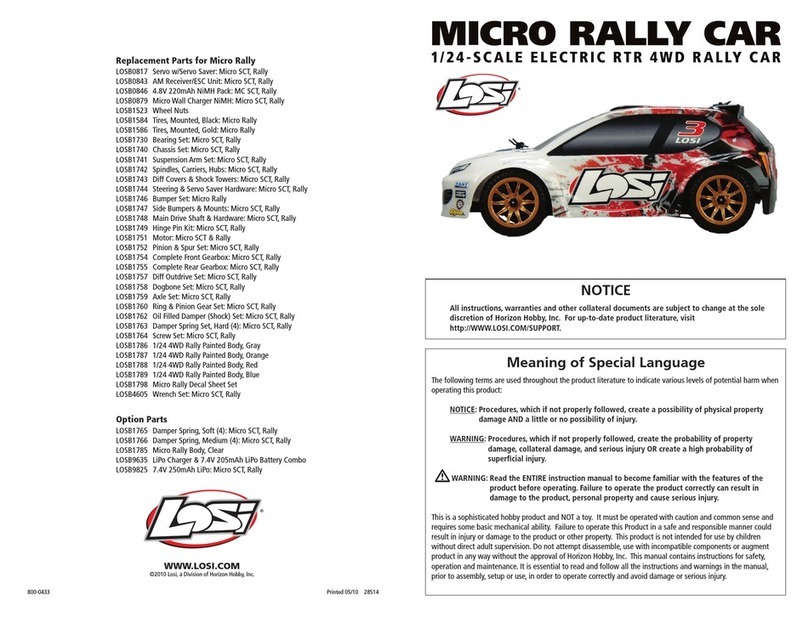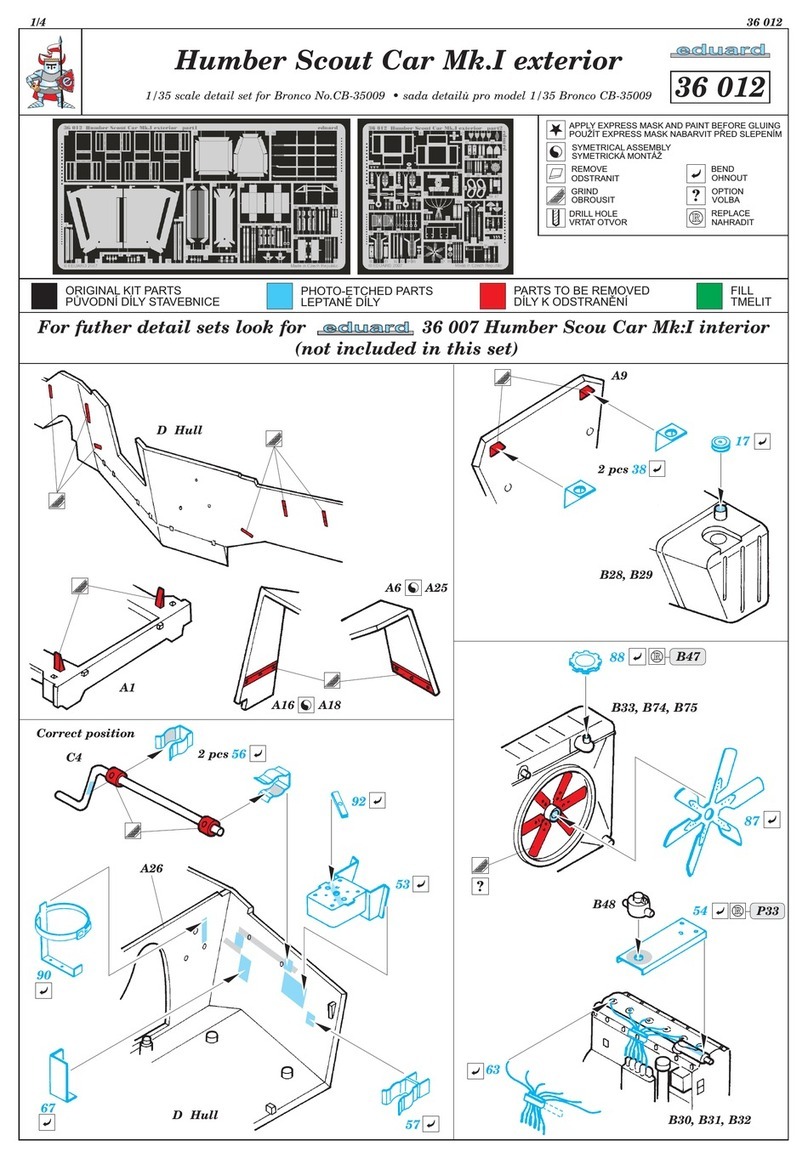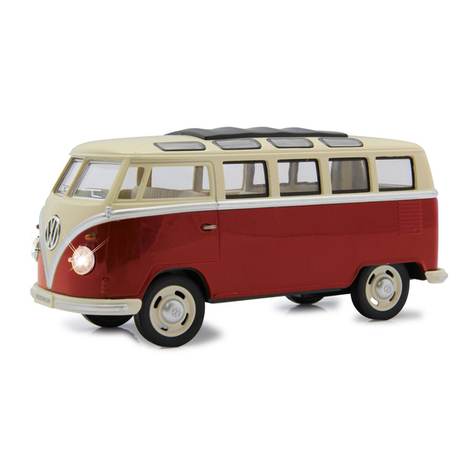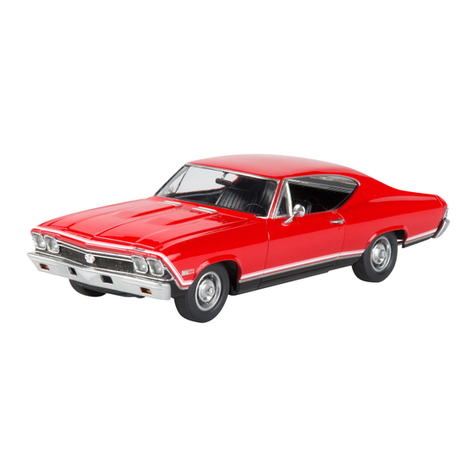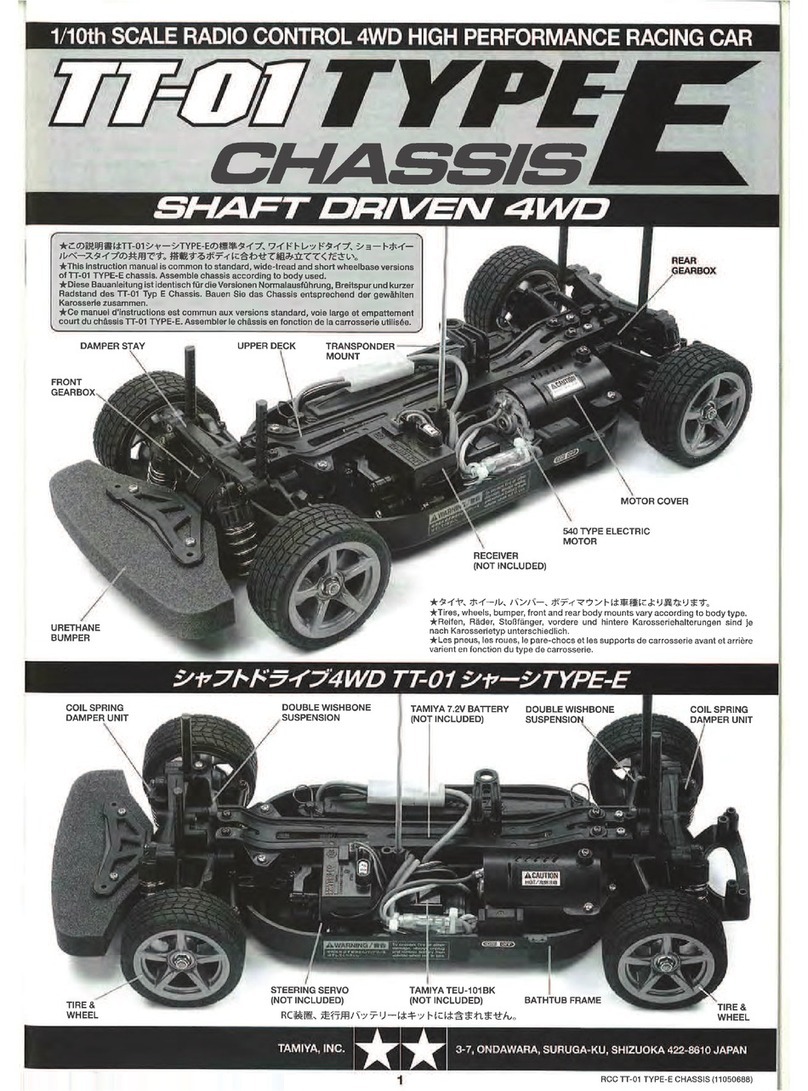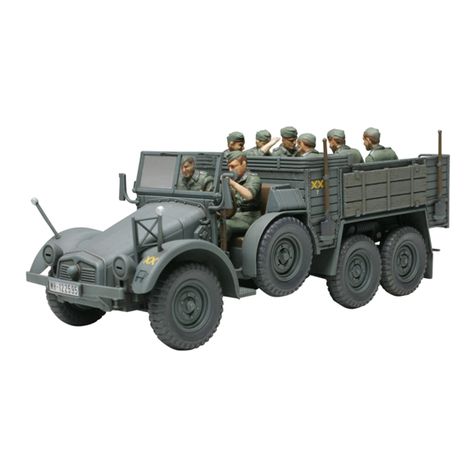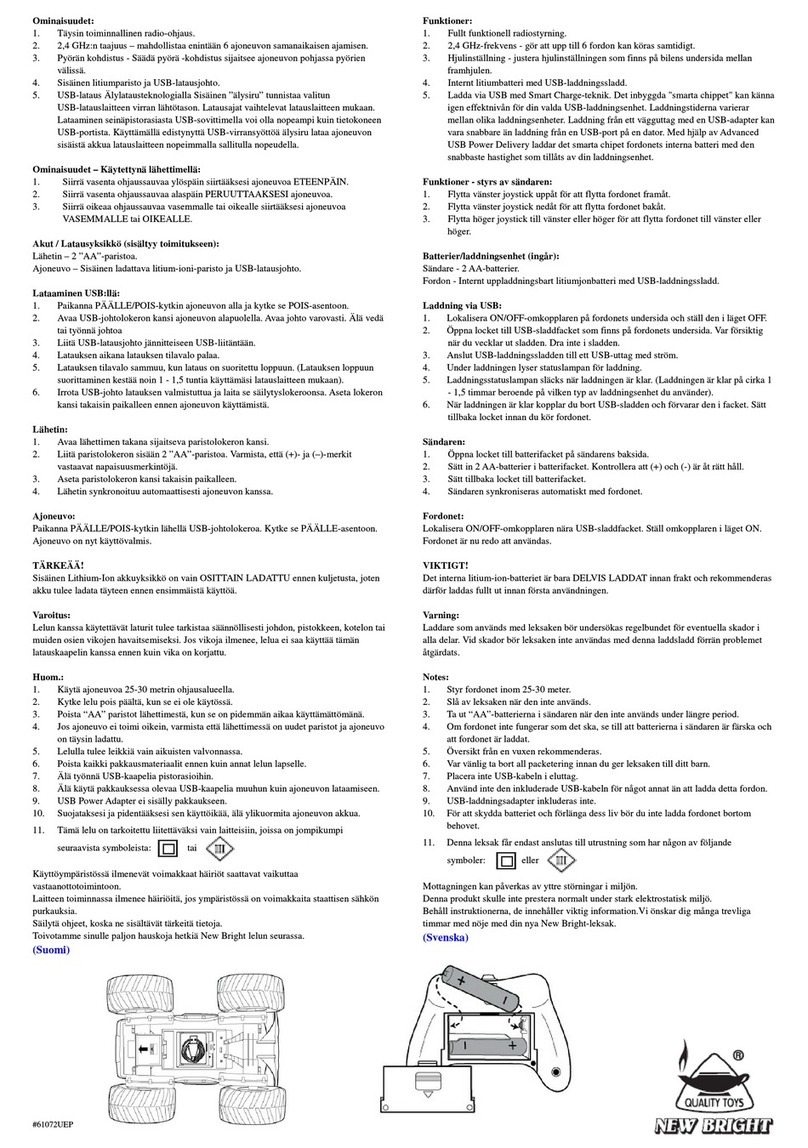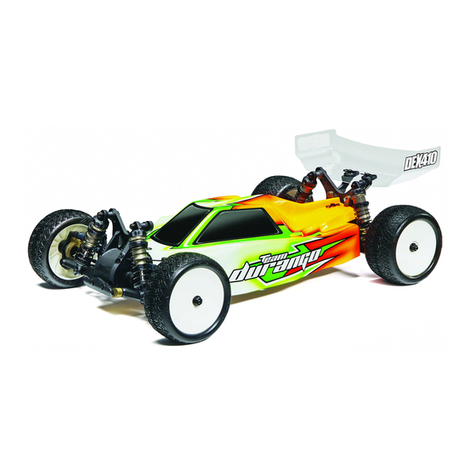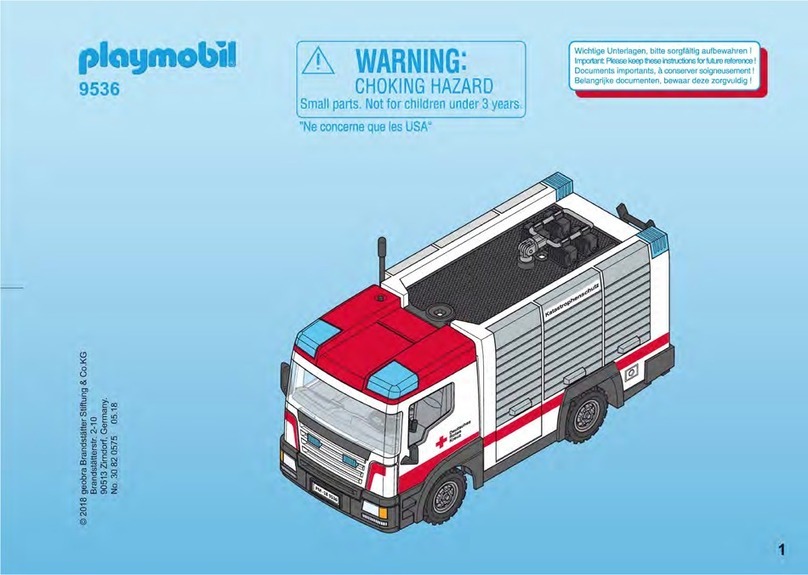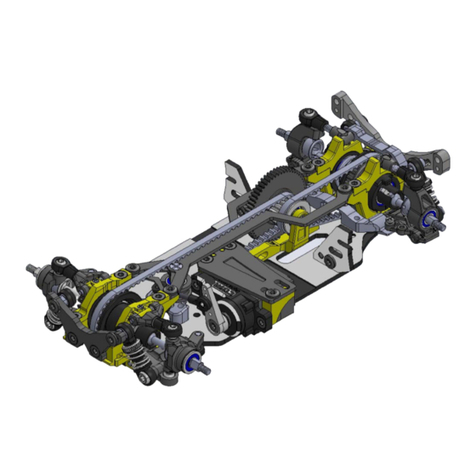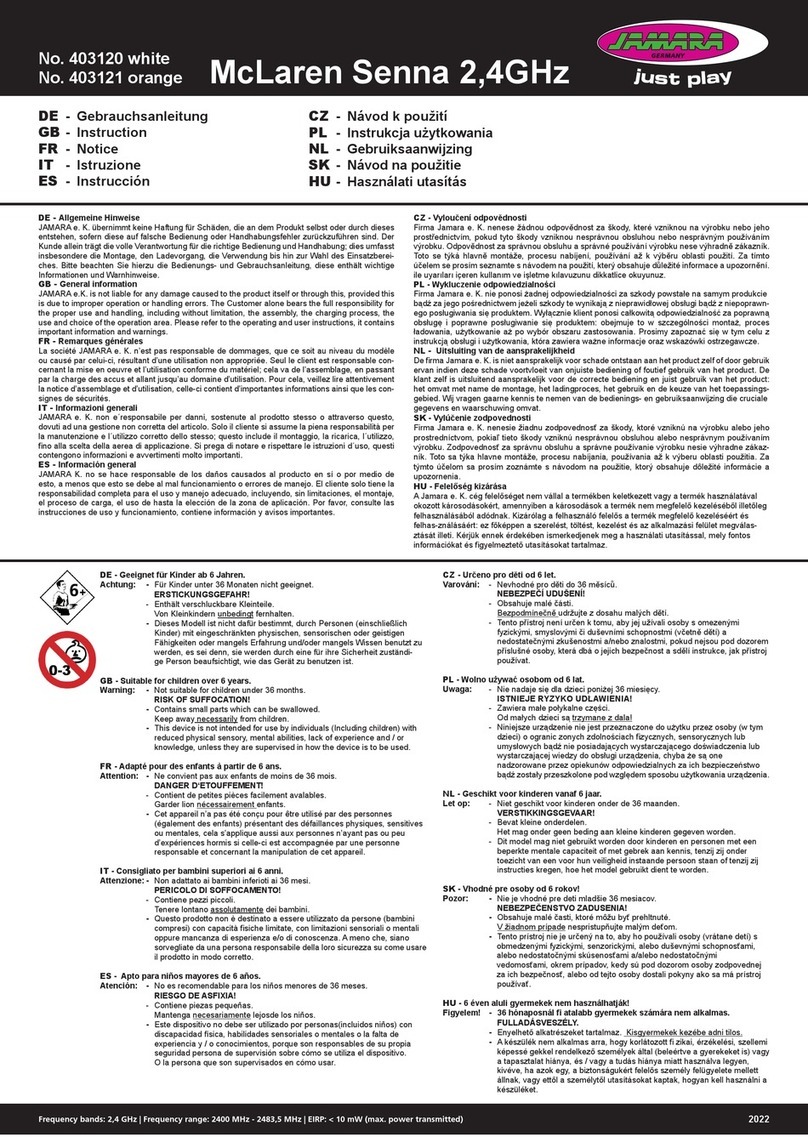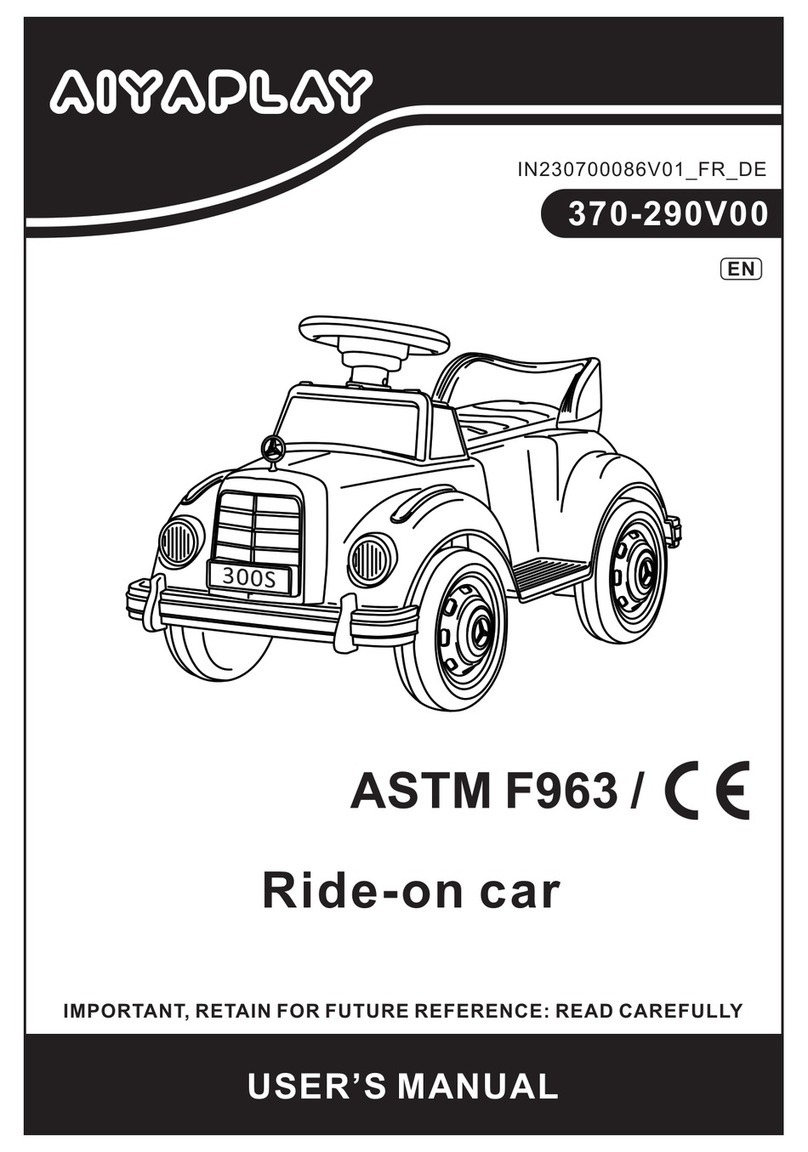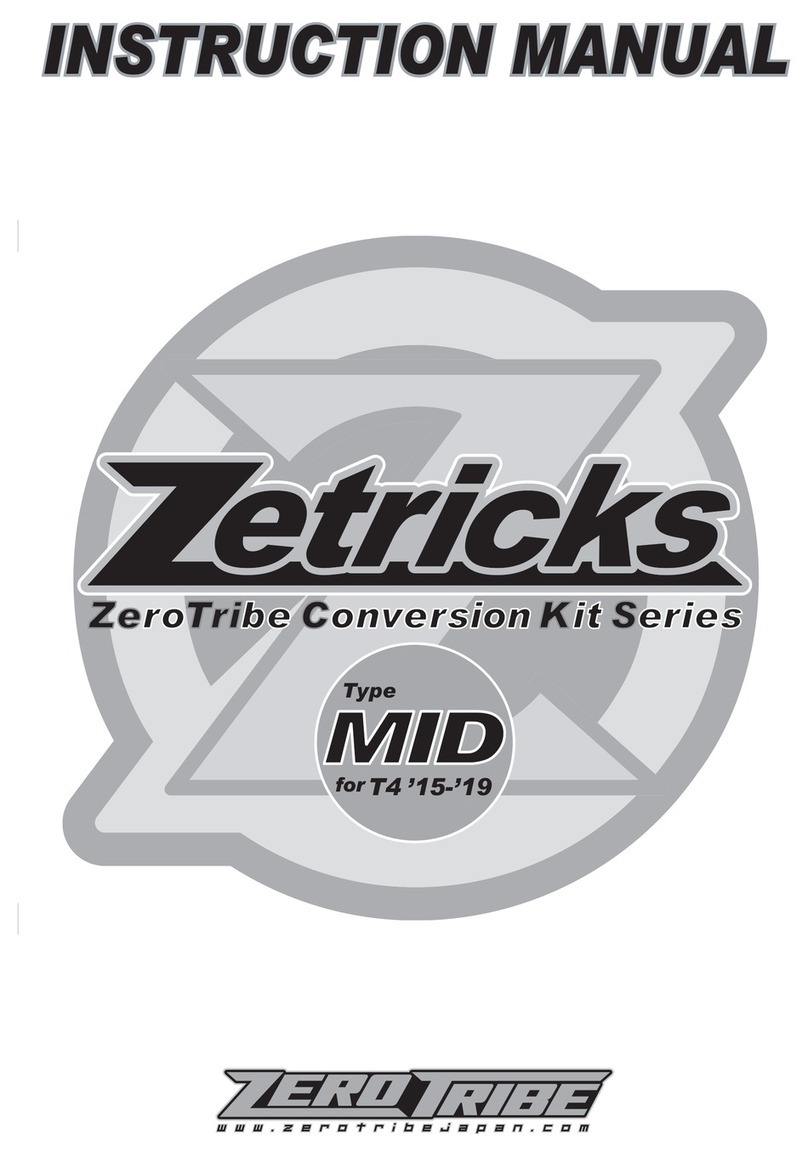
Page 2
lNever use any fuel in your engine other than glow fuels
specically designed for use in model car engines. Use of any
other types of fuel can cause severe damage to your engine
and/or personal injury.
NEVER USE GASOLINE/PETROL OR DIESEL FUEL!
lNever operate your model on any public streets. This could
cause trafc accidents, personal injury and/or property damage.
lGlow fuel engines emit exhaust vapors that are poisonous
and can be dangerous to your health. It is important that you
operate your engine in a very well-ventilated area, preferably
outdoors.
lBefore starting your engine, make sure that the throttle trim
is set to the idle position. Starting your engine at any setting
above idle can cause the model to lurch out of your hands.
lWhen your engine is running, there are certain parts that rotate
at high speeds. Be careful not to touch the drive shafts, gears,
clutch assembly or any other moving parts. Otherwise, serious
injury could result.
lIt is normal for your engine and tuned pipe to get very hot during
operation. Never touch these parts while they are hot or you
could be burned.
lModel engines produce vibration when they are running. It is
important to periodically check the engine mounting screws
and other assemblies to ensure they are tight. Running your
engine with the engine mounting screws loose can lead to
severe engine and/or chassis damage.
lUnder no circumstances should you operate your model in
crowds of people. Serious injury could result.
lNever operate your model on busy streets or if there are cars
around.
lDo not use your model to chase pets or other animals.
lThe receiver and battery boxes are not waterproof; therefore,
do not drive through water, wet grass, mud or snow.
lBecause your model is operated by radio control, it is important
to make sure you are always using fresh and/or fully charged
batteries (if using NiCDs or NiMHs). Never allow the batteries
to run low or you could lose control of the model.
lIf your model becomes stuck, allow the engine to idle, then
retrieve your model by hand.
lTo prevent excessive r.p.m.s from damaging your engine and/or
drivetrain components, we suggest reducing throttle while in
the air during jumps.
SAFETY WARNINGS
ENGINE WARNINGS GLOW FUEL WARNINGS
lGlow fuels like those used in your model engine are extremely
poisonous. Follow all the precautions that are printed on the
fuel manufacturer's container.
lKeep glow fuel out of the reach of children.
l Glow fuel is extremely ammable. Keep away from high heat,
sparks and ame.
GENERAL WARNINGS
TABLE OF CONTENTS
Visit us on the web at
www.teaMXtM.CoM
DISTRIBUTED IN EUROPE BY:
Ripmax Ltd.
241 Green Street
Eneld, EN3 7SJ, U.K.
DISTRIBUTED IN NORTH AMERICA BY:
Global Hobby Distributors
18480 Bandilier Circle
Fountain Valley, CA 92708
Safety Warnings ........................................................................................2
Customer Service Information...................................................................3
Introduction................................................................................................3
Popular Option Parts .................................................................................3
Recommended Tools and Supplies ...................................................... 4~5
Becoming Familiar with Your XST 4WD Truggy RTR .......................... 5~6
Tips From the Pros ....................................................................................7
Preparing to Run Your XST 4WD Truggy RTR ...................................7~11
Becoming Familiar with the XTM Racing 24.7 Nitro Engine..............11~13
Fueling and Starting the XTM Racing 24.7 Nitro Engine.........................13
Breaking in and Fine-Tuning the XTM Racing 24.7 Nitro Engine..... 14~16
Basic Engine Maintenance......................................................................17
Installing the Body Shell ..........................................................................17
Chassis Tuning Guide ...................................................................... 17~22
Maintaining Your XST 4WD Truggy RTR.................................................23
Troubleshooting Guide ..................................................................... 24~25
Assembly Manual ............................................................................ 25~52
Replacement Parts List .................................................................... 53~58
Option Parts List .............................................................................. 59~63
Important Warranty Service Information...................................Back Cover
Warranty Information ................................................................Back Cover
